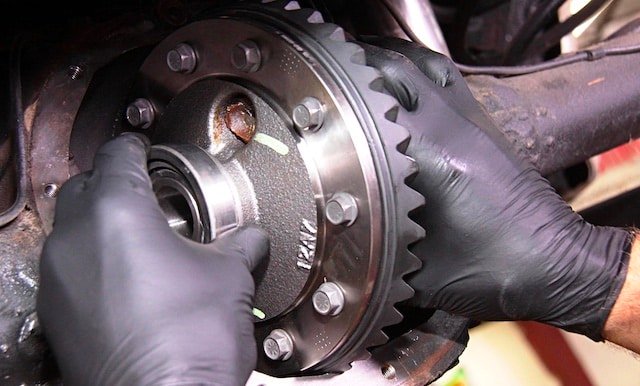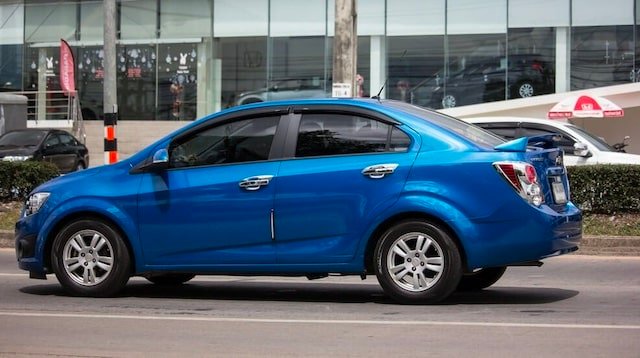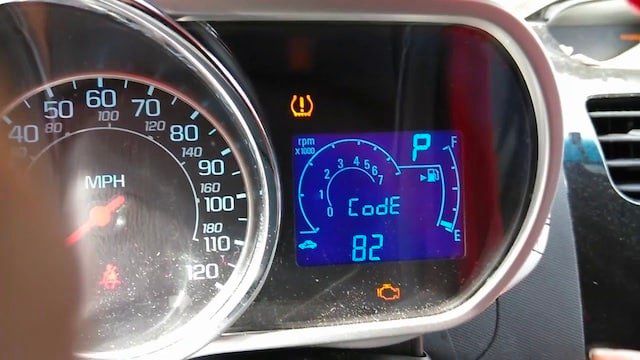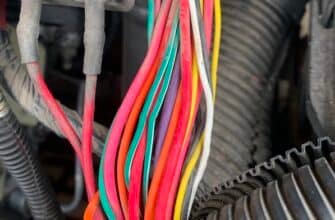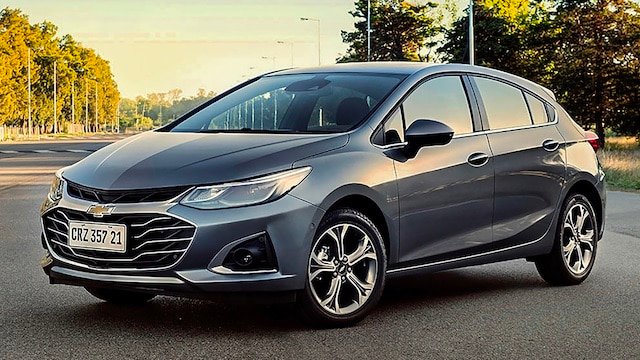The 4L60E transmission was launched in 1992 as the latest version of the 700R4 transmission, commonly called the 4L60 transmission. This upgrade features in most GM trucks, vans, SUVs, and rear-wheel drive vehicle applications.
The automatic shift, four-speed overdrive is longitudinally positioned, can function in different heavy-duty four-wheels, and is electronically controlled. If you own a Corvette, Camaro, Impala, or Caprice, this is the guide you need to understand everything about the hallmark of automatic transmission.
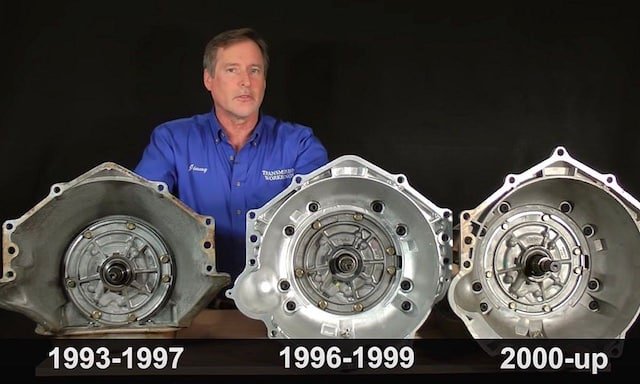
The Evolution Of General Motors (GM) Transmission
General Motors/Hydramatic unveiled the 4L60E transmission in 1992. Before the launch, the Turbo 700R4 (1982) and 4L60 (early version – 1990) were the reigning champions for all GMC and Chevrolet applications that had 6 lugs on their wheels.
Note: A wheel with 6 lug nuts belongs to a light-duty truck.
Although both share some similarities, they differ greatly in terms of design and power. Here are some of the reasons why Chevy owners prefer the latest 4L60E.
- For starters, the 4L60-E is an abbreviation for 4-speeds, Longitudinally positioned 6000 lbs.GVW is electronically controlled. It can take up to 8600 lbs too.
- The 4 gear options in this transmission are 3.06, 1.63, 1, 0.7, and 2.29 (for the reverse gear). The 3.06 low gear is responsible for the transmission’s strong performance at low vehicle speed, while the 0.7 top gear corresponds to great overdrive fuel economy performance.
- Unlike its predecessors, transmission in the 4L60E is electronically controlled. This implies that the valve body and actuation system for clutches and bands are controlled by an electronic actuator and solenoids.
- It comes with a removable bell housing. The electronic transmission was a follow-up to both the 4.3L V6 engines and V8 engines. It also suits most RWD cars and trucks with 2wd and 4wd configurations.
- The 4L60E transmission uses a Vehicle Speed Sensor (VSS) as a major feedback sensor that conveys data to the PCM or ECM (vehicle powertrain computer) before transmission decisions are made. This engineering upgrade brought about remarkable simplification and improvement in shifting.
- In terms of strength, the 4L60-E is immense. It easily transmits remarkable power from both performance car and truck applications and can handle a maximum engine torque of 360 lb-ft.
However, a major setback you should watch out for in this transmission is the inability to use the reverse gear due to accumulated debris.
Engine Compatibility And Adaptability
The front face 4L60-E is ideally compatible with most Chevrolet 90-degree small block and big block patterned engines (the V6, V8 & I6 of this world included). Thanks to the automatic control this transmission enjoy via the PCM and its wiring, it is very easy to attach the 4L60E to a factory engine.
To link the 4L60E with older engines, a GM controller (like the #12497316) may be required. Carbureted engines also require a throttle position sensor. Drivers converting their older engines to engines not regulated by a GM OCM should opt for the TH700R-4 because it is a simple and cost-effective alternative.
If you are interested in knowing more about the 4L60E in your car, you can get this information from a sticker placed on the transmission by GM. This sticker contains information about the year of manufacture and the vehicle it came in.
Transfer Case Adaptability
The 4L60E enjoys seamless interchange in most Jeeps. Thanks to its adaptability, vehicles with both 2wd and 4wd versions of the 4L60E can replace each other without any setbacks.
Popular jeeps and IH transfer cases that can readily align with this transmission include:
- Dana 18 (truck or longer wheelbase applications only)
- Dana 20
- Dana 300 (1980-1986)
- New Process Jeep 208, 219 & 229
- New Process 207, 231, 241OR, 242 & 249
Although most factory-designed GM 4wd applications with OEM configured 4L60E come with adapters and transfer cases that are essentially too long for a Jeep.
Their sizes, strength, and gearing are also below par for most Jeep applications. When faced with this, it is advisable to use an adapter with a different bolt pattern and spline count than the designated ones. Especially if it is a Jeep NP231 (231J) or Chevy NP231.
4L60E Transmission Interchange Swap Tips
Switching to the 4L60E transmissions on vehicles can be a bit tricky but is very achievable. The difference in the process is primarily tied to the vehicle’s year of manufacture. Let’s find out the process involved in some of the most popular Chevy with this transmission:
| 4L60E Year + Vehicle Year | Required Transmission Process |
| 1994 4L60E + 1995 Vehicle | No serious reprogramming is needed for this transmission interchange. Electrical and mechanical modifications are not needed. The overall process should be straightforward and smooth. |
| 1994 4L60E+ 1996 Vehicle | The VSS plus tail shaft covering of the vehicle must be installed on the 4L60E transmissions before it is directly bolted into the car. The 3-2 downshift is also a good candidate for swapping. |
| 1996 4L60E+ 1995 Vehicle | The TCC lockup must be modified before the transmission is bolted to the car. This is to avoid the production of excess heat during transmission. Excess heat can be traced down to faulty gas mileage. |
| 1995 4L60E+ 1994 Vehicle | The tail shaft housing and VSS have to be installed on the transmission before it is fitted into the car |
Kindly note that the swap procedure from a different transition to the 4L60E requires a switch of flexplates and torque converters. This aids the integration of the new transmission but is not a task for non-professionals.
You should also know your vehicle’s mileage before switching to this electronic transmission to avoid wasting money on the process and ending up with a trouble-infested car.
What About The 4L65E And 4L70E Transmission?
The 4L65E (HD version of 4L60E) and 4L70E transmission is an upgrade to the 4L60E. They share the same features as their predecessor but boast of improved power output.
A notable addition to these upgrades includes an Input Shaft Speed Sensor responsible for advanced transmission and engine control through the ECM. This sensor is centered in the front pump assembly and has been like that since 2008.
Drivers who swap this part of the vehicle should have an idea of the compatibility issue it may present before commencing the process.
4L60E Transmission Interchange Chart: Conclusion
There is a reason why the 4L60E transmission is referred to as the hallmark of GM’s transmissions. The 4L60E did not just change the transmission game, it came with reinforced strength, quality, and all-around versatility.
This electronic transmission is, without doubt, one of the most respectable transmissions any truck owner can pray for. Aside from the CJ5 jeep and its short wheel-based family, the 4L60E pretty much works with all Jeep types and is very adaptable.

